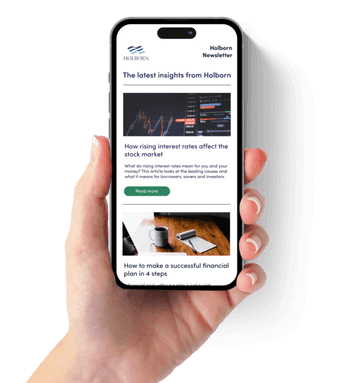
Posted on: 11th April 2025
Financial Inclusion in Asia: Bridging the Gap with Digital Solutions
Imagine not having access to a bank account, a loan, or even a way to safely save money.
For millions across Asia, this is still a daily reality. But thanks to rapid advances in technology, digital tools are now opening doors that were once firmly closed.
In this article, we’ll explore how digital solutions are transforming financial inclusion in Asia—bringing underserved communities into the financial system, empowering individuals, and fuelling economic growth.
Why Financial Inclusion Matters
Financial inclusion is about making sure everyone has access to affordable and useful financial services—whether it’s savings, credit, insurance , or payments. It’s a key part of reducing poverty and creating opportunities for people to build better futures.
Yet in Asia, despite strong economic development, around 24% of adults still lack access to a basic bank account , with even more facing limited access to credit or digital services. The divide is even wider in rural areas and among low-income households.
What’s Holding People Back?
There are several barriers that make it hard for people to participate in the financial system:
High banking costs: Traditional banks often require minimum balances or charge fees many can’t afford.
Distance from branches: In remote regions, the nearest bank could be hours away.
Documentation issues: Formal ID requirements can exclude many, especially women and migrants.
Limited financial literacy: Understanding how to use financial products is still a hurdle for many.
Fortunately, digital tools are helping to overcome these challenges—and fast.
The Digital Difference: How Tech is Closing the Gap
Across Asia, smartphones and internet access are becoming more widespread.
That’s allowing financial services to leapfrog traditional systems and go straight to digital—making them more accessible, affordable, and convenient.
Mobile Money & Digital Wallets
Take mobile wallets like bKash in Bangladesh or GCash in the Philippines.
These platforms let users send and receive money, pay bills, and even access credit—all from a mobile phone, no bank needed. In areas where brick-and-mortar banks are scarce, these apps are a lifeline.
Microfinance Meets Mobile
Microloans and micro-savings products, traditionally delivered through face-to-face networks, are now going digital.
Apps can offer tailored financial products based on users’ behaviour and needs, helping small-scale entrepreneurs and rural communities access capital more easily.
Smarter Credit with Alternative Data
Not everyone has a credit score—but many have a mobile phone.
Fintech companies are now using data like mobile usage, e-commerce history, and even utility payments to assess creditworthiness. It’s a game-changer for those who’ve never borrowed from a bank before.
Digital ID and Blockchain
Secure digital identities, often powered by blockchain or biometric verification, are making it easier to prove who you are—especially important in regions where formal IDs aren’t common.
This opens the door to financial access for millions who were previously left out.
Success Stories Making an Impact
Let’s look at a few examples of digital solutions driving financial inclusion in Asia:
bKash (Bangladesh): With over 70 million users, bKash has revolutionised mobile money and enabled cashless transactions for people with limited banking access.
Tonik (Philippines): As Southeast Asia’s first digital-only bank, Tonik offers high-yield savings and loans via a simple app, with no branches in sight.
Funding Societies (Regional): This peer-to-peer lending platform connects SMEs to investors, helping close the credit gap for small businesses across Southeast Asia.
These platforms show that with the right tools, inclusion is more than possible—it’s powerful.
Challenges to Watch Out For
While digital finance is promising, it’s not without its risks:
Digital literacy gaps: Not everyone is comfortable using apps or understanding digital tools. Training and support are key.
Cybersecurity threats: Scammers and fraudsters often target first-time users. Platforms need strong protections, and users need to know how to stay safe.
Connectivity issues: Poor internet infrastructure in some regions can limit access to digital services.
Regulatory grey areas: As fintech grows, laws and regulations must evolve to protect consumers while still allowing innovation.
Bridging the Gender Gap
It’s also important to recognise that women are disproportionately excluded from financial systems in many parts of Asia. They may lack formal ID, mobile phones, or access to education. But digital solutions can help change that.
Initiatives tailored to women—like mobile microloans, group savings apps, and financial literacy programmes—are helping women start businesses, manage money independently, and uplift their families and communities.
When women are financially empowered, everyone benefits.
What’s Next: Building an Inclusive Future
Digital financial inclusion isn’t just a trend—it’s a movement. And to make the most of it, collaboration is essential.
Public-private partnerships can help scale successful solutions.
Governments need to invest in digital infrastructure, especially in rural and underserved areas.
Financial institutions must build products that are simple, intuitive, and meet real-world needs.
Education—both financial and digital—must be part of the equation from the start.
At the heart of all of this is a shared goal: making sure no one is left behind.
Final Thoughts
Financial inclusion in Asia is being transformed by digital solutions. From mobile wallets to AI-powered credit scoring, technology is unlocking new possibilities for millions of people.
As a financial service provider in the region, we believe in supporting innovation that puts people first. Because when everyone has access to the tools they need to succeed, entire communities can thrive.
It’s not just about banking—it’s about building a better, fairer future for all.
Need professional financial advice?
We have 18 offices across the globe and we manage over $2billion for our 20,000+ clients



